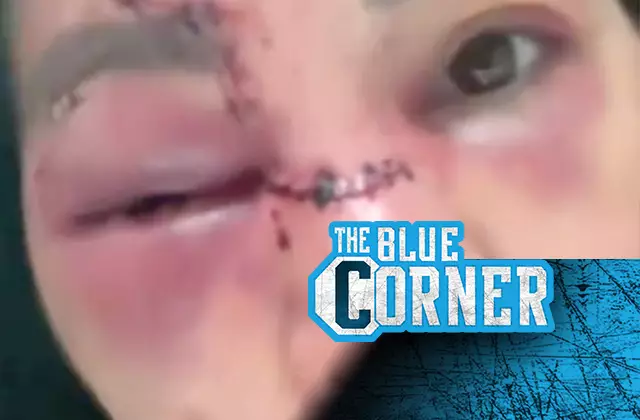Irene Aldana’s match against Norma Dumont at UFC 306 served as a stark reminder of the physical toll that mixed martial arts can impose on its athletes. While Dumont’s unanimous decision victory garnered her a well-deserved win, the fight was marked by a horrific injury sustained by Aldana, which has since sparked discussions about fighter safety and the gruesome nature of certain injuries in the sport. As spectators watched in stunned silence, the brutal ramifications of the match became evident when Dumont inflicted a deep laceration on Aldana’s forehead, reminiscent of injuries one might expect to see from far deadlier encounters.
Mixed martial arts, by its very nature, involves a degree of violence that is hard to ignore. While the sport has evolved with rules and regulations designed to protect participants, incidents like Aldana’s lead many to reconsider the potential risks. The gash that emerged from this match looks less like an injury from a sport and more like it belongs to a horror film. It pushes the limits of what fans and opponents alike might deem acceptable. As more images of the wound flooded social media, they evoked a mixture of awe and revulsion, emphasizing the visceral nature of MMA and raising questions about how far we’re willing to go for entertainment.
In the wake of such incidents, social media plays a crucial role in shaping narratives surrounding athletes and their experiences. Aldana herself took to platforms like Instagram to showcase both the injury and her resilient spirit through a series of updates. She displayed the stitches and staples that mark the aftermath of her fight, presenting a bold front that contrasts sharply with the gruesome visuals of the injury. This reflects a common theme where fighters use social media not only to share their struggles but also to connect with fans, potentially redefining their public personas in the face of adversity.
While Aldana’s outward confidence may suggest a quick recovery, the psychological impact of such an injury often lingers. Fighters are not only concerned with their physical well-being but must also navigate the mental factors associated with returning from a traumatic event. Some may find inspiration in their experiences, while others may grapple with anxiety about stepping back into the octagon. Aldana’s declaration that she is ready for the next challenge illustrates the mental fortitude required of elite athletes in combat sports.
The fallout from Aldana’s fight against Dumont raises significant questions about the nature of combat sports and the inherent risks athletes face. As injuries continue to shock spectators and participants alike, it’s vital for organizations to continuously strive for better safety measures while respecting the spirit of competition. No one can ignore the brutal beauty of MMA, but as fans appreciate the skills and valor on display, they must also acknowledge the sacrifices made by those who compete—sacrifices that sometimes leave lasting marks, both physically and mentally. Aldana’s journey serves as a testament to her resilience and the complex relationship athletes have with their sport, a narrative that will undoubtedly resonate long after the final bout of the night.

